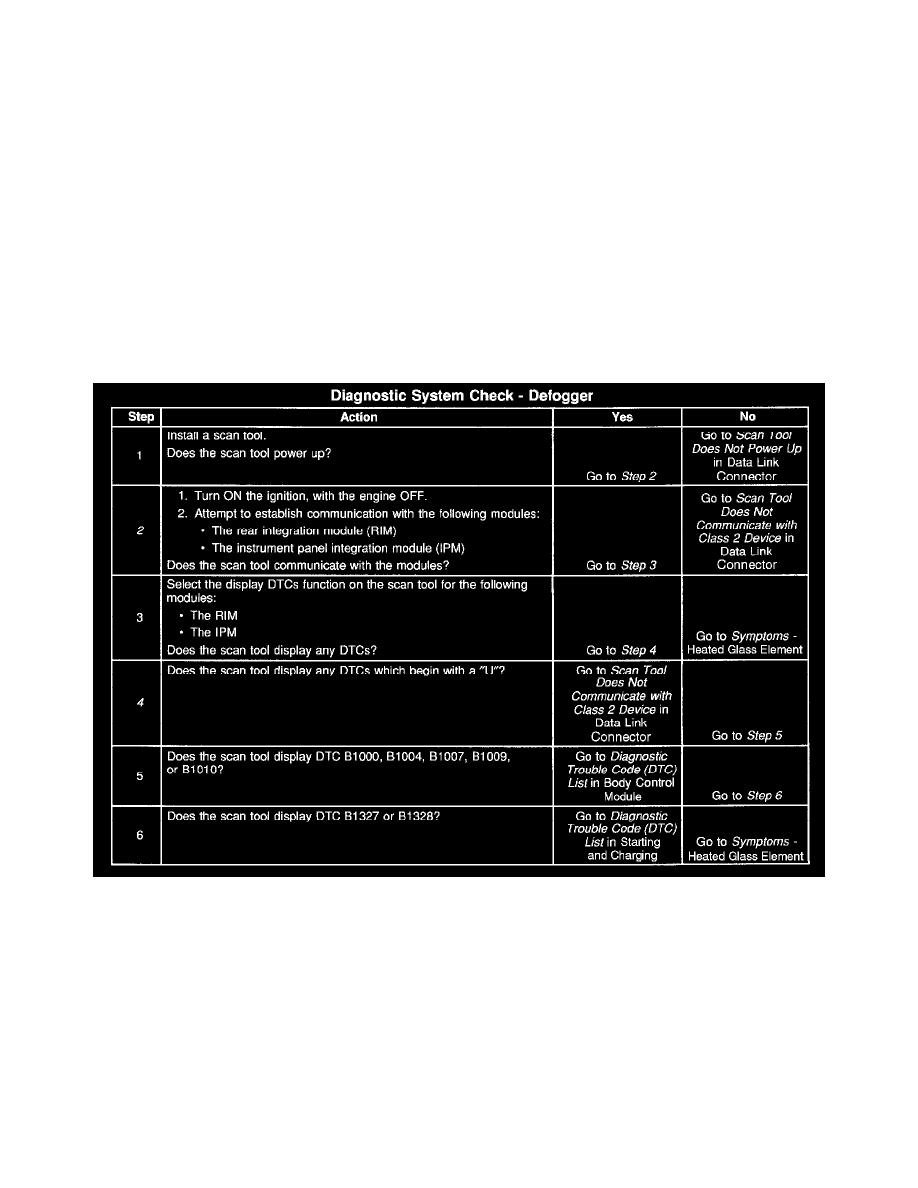Aurora V6-214 3.5L VIN H SFI (2001)

Heated Glass Element: Initial Inspection and Diagnostic Overview
Diagnostic Starting Point - Heated Glass Element
For the Automatic Day-Night Mirror system, begin the diagnosis by reviewing the system Description and Operation. Reviewing the Description and
Operation information will help you determine the correct symptom diagnostic procedure when a malfunction exists. Reviewing the Description and
Operation information will also help you determine if the condition described by the customer is normal operation. Refer to Symptoms - Stationary
Windows in order to identify the correct procedure for diagnosing the system and where the procedure is located. See: Symptom Related Diagnostic
Procedures
For the Rear Window Defogger system, begin the diagnosis with the Diagnostic System Check - Defogger. The Diagnostic System Check will provide
the following information:
^
The identification of the control module(s) which command the system
^
The ability of the control module(s) to communicate through the serial data circuit
^
The identification of any stored diagnostic trouble codes (DTCs) and their status
The use of the Diagnostic System Check will identify the correct procedure for diagnosing the system and where the procedure is located.
Diagnostic System Check - Defogger
TEST DESCRIPTION
Steps 1-6
The number(s) below refer to the step number(s) on the diagnostic table.
2. Lack of communication may be due to a partial malfunction of the class 2 serial data circuit or due to a total malfunction of the class 2 serial data
circuit. The specified procedure will determine the particular condition.
4. The presence of DTCs which begin with U indicate some other module is not communicating. The specified procedure will compile all the
available information before tests are performed.
